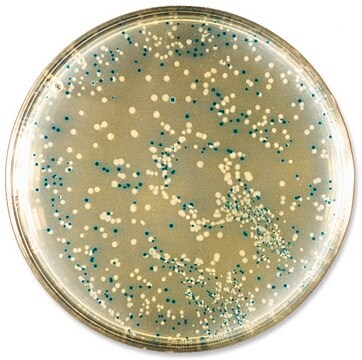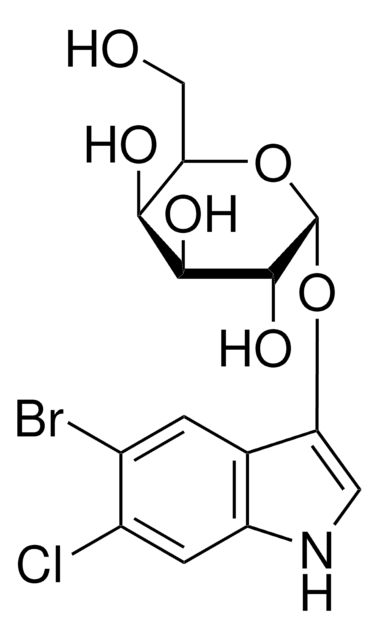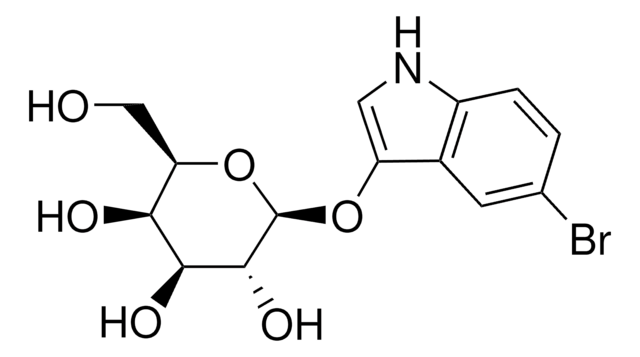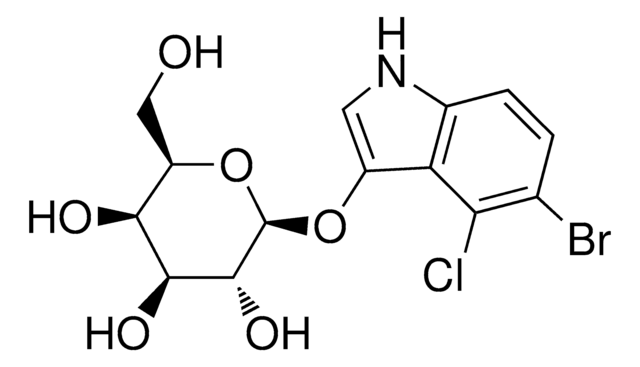C4478
S-Gal®/LB Agar Blend
reagent for selection of recombinant bacterial clones
Sinónimos:
Agar Blend
About This Item
Productos recomendados
grade
for molecular biology
sterility
non-sterile
form
powder
technique(s)
microbiological culture: suitable
suitability
suitable for β-galactosidase test
nonselective for Escherichia coli
nonselective for coliforms
application(s)
food and beverages
microbiology
storage temp.
room temp
Categorías relacionadas
General description
Application
Features and Benefits
- More intense color contrast than X-gal
- Water-soluble and autoclavable for easiest use
- Convenient, pre-mixed media
Components
Tryptone, 10
Yeast extract, 5
Sodium chloride, 10
Agar, 12
S-Gal, 0.3
Ferric ammonium citrate, 0.5
IPTG, 0.03
Principle
Preparation Note
Other Notes
formulation. A medium prepared with S-Gal® is moderately dark due to the presence of ferric ammonium citrate. This darker background often provides enhanced contrast for automated colony counting or isolation.
Legal Information
Related product
Storage Class
11 - Combustible Solids
wgk_germany
WGK 3
flash_point_f
Not applicable
flash_point_c
Not applicable
ppe
Eyeshields, Gloves, type N95 (US)
Certificados de análisis (COA)
Busque Certificados de análisis (COA) introduciendo el número de lote del producto. Los números de lote se encuentran en la etiqueta del producto después de las palabras «Lot» o «Batch»
¿Ya tiene este producto?
Encuentre la documentación para los productos que ha comprado recientemente en la Biblioteca de documentos.
Los clientes también vieron
Nuestro equipo de científicos tiene experiencia en todas las áreas de investigación: Ciencias de la vida, Ciencia de los materiales, Síntesis química, Cromatografía, Analítica y muchas otras.
Póngase en contacto con el Servicio técnico








